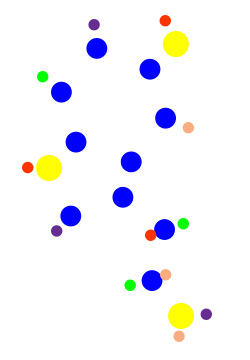Sunlight and Your Skin
/You know that wonderful feeling of having the sun on your skin; it signals the beginning of summer, and you go about your day with a smile on your face and sense of wellbeing.
Though the sun has other wonderful benefits, it can unfortunately also lead to skin damage ranging from sunburn and premature skin ageing, to potentially causing skin cancers. It is the ultraviolet (UV) light that actually causes these effects on your skin. There are three types of UV light that are classified according to their wavelength; UVA, UVB and UVC.
As sunlight passes through the atmosphere, all of the UVC (short wavelength; 100-280nm) is absorbed by the ozone, so we can affectively ignore this type (see Figure 1).
Most of the UVB (medium wavelength; 280-315nm) is also absorbed before it can reach your skin, however, with the depletion of the ozone, we are exposed to higher levels of UV radiation, particularly UVB. UVB results in the immediate effect of being in the sun, such as tanning. This is caused by the production of melanin by melanocytes (the pigment producing cells) providing your skin with natural protection against UV radiation.
Sunburn, that develops into peeling of skin and inflammation, is due to more UVB rays absorbed than the level of melanin in the skin can protect you from. UVB rays also slows down the production of collagen, required for structural support of our skin with elastin. This results in some of the long term effects of repeated sun exposure, such as premature skin ageing with the appearance of wrinkles, sagging of the skin, sun spots, and a rough and leathery skin texture. Though it cannot penetrate beyond the superficial layers of the skin, eventually UVB exposure will significantly increase the risk of developing skin cancer (see Figure 2).
UVA, with the longest wavelength (315-400nm) and accounting for ~95% of UV radiation, is not significantly stopped by the atmosphere (see Figure 1). As with UVB, UVA will induce the production of melanin and also contribute to premature skin ageing and wrinkling. But because UVA rays can penetrate deeper into the layers of the skin, it can also cause DNA damage that can ultimately lead to cancer.
It’s worth noting that using a sun-bed, which uses UV light, will also have these effects on your skin. If you do use one, maybe use it less often if you can’t stop completely.
In the next post learn on how to protect your skin while still enjoying the 5 positive effects of being in the sun.
If you enjoyed reading this, please like, share or leave a comment.





